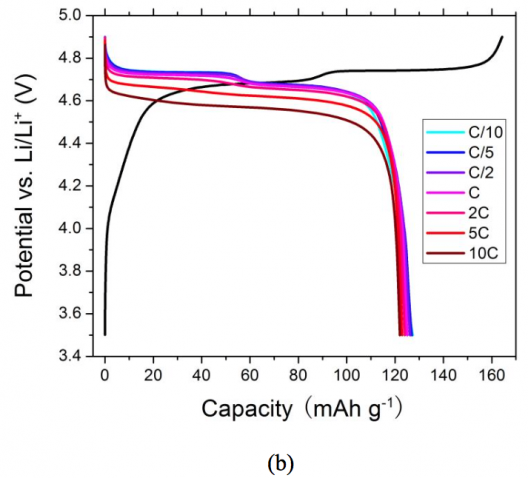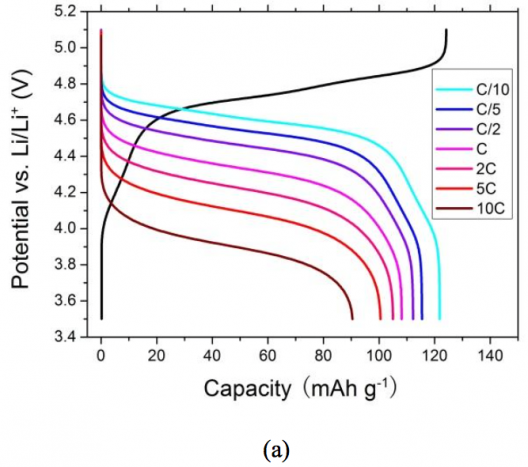Oak Ridge National Laboratory has announced that their researchers have built and demonstrated a high-voltage (5 V) lithium, solid-state battery with a usable life of more than 10,000 cycles, at the end which test the battery retains more that 90-percent of its original capacity. That makes two such claims in a week, with ORNL’s battery comparable to that developed by Nanyang Technology University (NTU) and reported on in this blog last week.

ORNL solid state battery shows high Coulombic efficiency, high capacity retention after 10,000 cycles
ORNL points out that, “For a given size of battery, the energy stored in a battery is proportional to its voltage. Conventional lithium-ion batteries use organic liquid electrolytes that have a maximum operating voltage of 4.3 V. Operating a battery above this limit causes short cycle life and serious safety concerns.”
“In this latest study, the Oak Ridge team replaced the conventional liquid electrolyte with a ceramic solid electrolyte of lithium phosphorus oxynitride (Lipon), and used a LiNi0.5Mn1.5O4 cathode and Li anode at a charge voltage to 5.1V.”
The abstract for Juchuan Li, Cheng Ma, Miaofang Chi, Chengdu Liang, and Nancy J. Dudney’s paper, “Solid electrolyte: the key for high-voltage lithium batteries,” in Advanced Energy Materials shows that the team used an entirely different chemistry from NTU’s titanium oxide-based design.

(b) a LiNi0.5Mn1.5O4 liquid battery discharged at different rates. The battery was charged at C/10 before each discharge measurement
This work demonstrates that replacing the conventional liquid electrolyte with a ceramic solid electrolyte of lithium phosphorus oxynitride (Lipon) eliminates the limit of conventional lithium-ion batteries. A model battery of LiNi0.5Mn1.5O4/Lipon/Li has been operated over 10,000 cycles at a charge voltage to 5.1V. The solid state battery retains more than 90% of its original capacity after 10,000 cycles. Such a battery has a cycling lifetime of more than 27 years with a daily charge/discharge cycle, exceeding the lifetime of most devices and even vehicles. This work infuses new life into the existing chemistry of high-voltage lithium batteries.
Here, readers can see the first page of the group’s report (with the following five pages coyly shaded to enforce payment of standard fees journals charge for enhancing your knowledge). Seeing more costs extra, the scientific equivalent of a peep show.
Along with NTU’s work, Sakti3 and Toyota have recently released information on solid-state batteries that show great promise for higher energy density, greater safety and longer lives for batteries.

